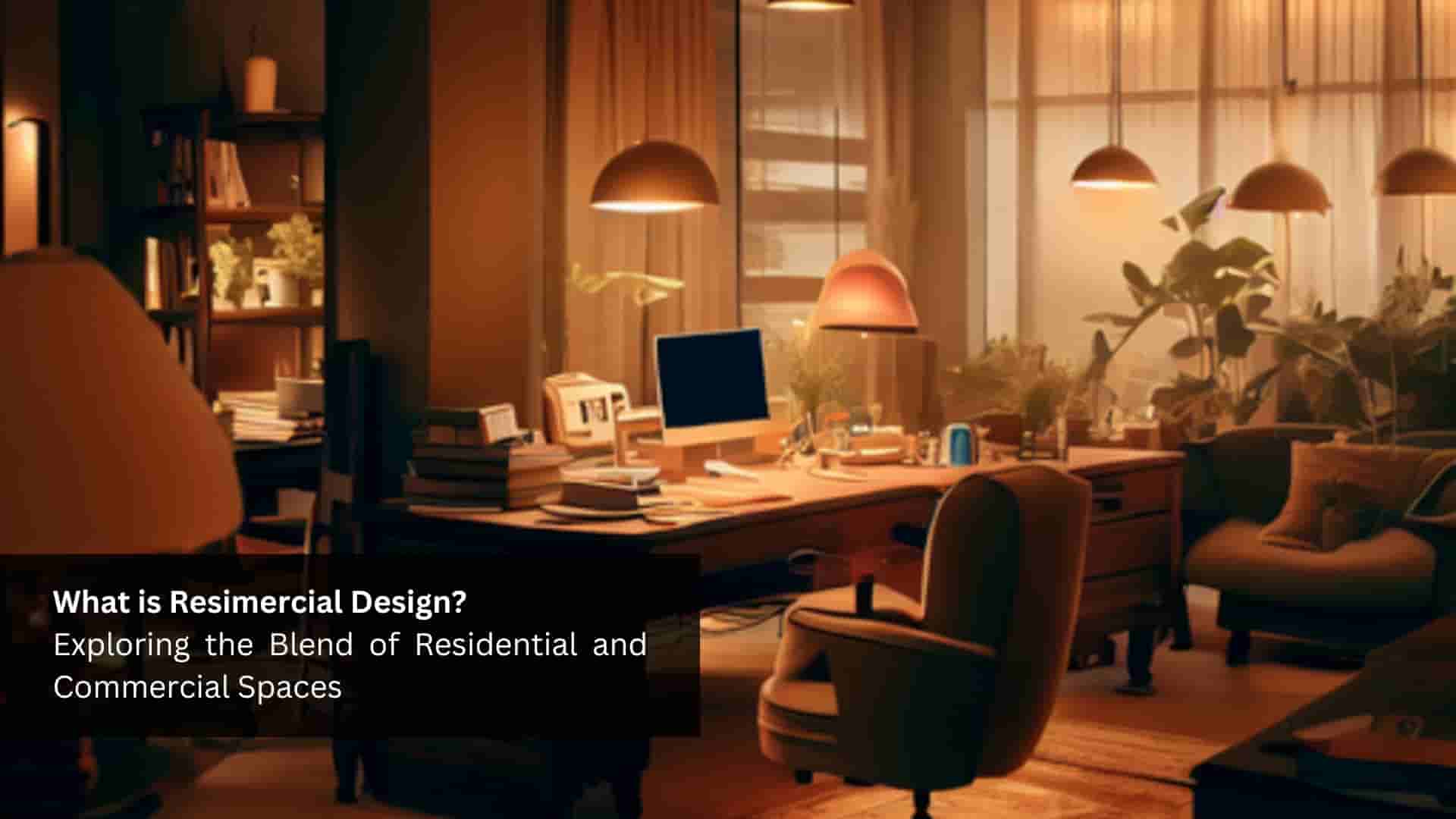In the ever-evolving world of interior design, a new trend has been gaining popularity that blurs the boundaries between residential and commercial spaces. This trend is known as “Resimercial Design,” a portmanteau of “residential” and “commercial.” Resimercial design is a fascinating concept that seeks to create work environments that are not only functional and efficient but also comfortable, inviting, and aesthetically pleasing. In this blog post, we will delve deep into the world of Resimercial design, exploring its origins, key principles, benefits, and examples of its application, all with the guidance of talented office interior designers.
Origins of Resimercial Design
Resimercial design has its roots in the changing nature of work and the evolving expectations of employees. Traditionally, office spaces were often characterized by stark, sterile environments with rows of cubicles and utilitarian furniture. However, as businesses began to recognize the importance of employee well-being, engagement, and productivity, a shift toward more welcoming and home-like workspaces emerged.
The concept of Resimercial design gained momentum in the late 20th century as a response to this shift. Interior designers and architects started experimenting with incorporating elements typically associated with residential design into commercial spaces. The goal was to create a more relaxed, comfortable, and inspiring atmosphere within workplaces.

Key Principles of Resimercial Design
- Comfort and Coziness: At the heart of Resimercial design is the emphasis on creating spaces that feel comfortable and cozy. This is achieved by selecting plush furniture, soft textiles, and warm lighting that mimics the comfort of home.
- Residential Aesthetics: Resimercial spaces often feature residential aesthetics, including the use of homey colors, textures, and materials. Natural wood, soft pastels, and comfortable upholstery are common design elements.
- Flexibility: Resimercial design prioritizes flexibility, allowing for a variety of work settings. This may include open lounge areas, collaborative zones, and private nooks, giving employees the freedom to choose where and how they work.
- Biophilic Design: The incorporation of biophilic design principles is a key aspect of Resimercial design. This involves bringing elements of nature into the workspace, such as plants, natural light, and natural materials, to enhance well-being and connection to the environment.
- Personalization: Resimercial spaces often encourage personalization, allowing employees to add their personal touch to their workspace. This can boost a sense of ownership and comfort.

Benefits of Resimercial Design
Resimercial design offers numerous benefits to both employers and employees. Let’s explore some of the advantages of adopting this approach in commercial spaces from the view of office interior designers:
- Enhanced Well-being: The emphasis on comfort, natural elements, and personalization contributes to improved employee well-being. Workers in Resimercial environments tend to report higher job satisfaction and lower stress levels.
- Increased Productivity: Comfortable and inspiring workspaces can boost productivity. Employees are more likely to be motivated and focused when they enjoy their surroundings.
- Attraction and Retention of Talent: Companies that invest in Resimercial design are often more attractive to potential employees. Additionally, these environments can help retain talent by creating a more enjoyable work experience.
- Adaptability: Resimercial spaces are designed with flexibility in mind. This adaptability allows businesses to easily reconfigure spaces to meet changing needs, whether due to growth or shifting work dynamics.
- Collaboration and Creativity: The incorporation of collaborative zones and comfortable meeting spaces fosters teamwork and creativity, promoting innovation within the organization.
Examples of Resimercial Design
To better understand Resimercial design in action, let’s explore some real-world examples:
- Airbnb Office, San Francisco:
The Airbnb office in San Francisco embodies Resimercial design principles. It features a welcoming, homelike atmosphere with a mix of workspaces, including cozy living room-style seating, communal kitchens, and private nooks. Natural materials, greenery, and a variety of seating options create a comfortable and flexible environment. - Google Workspace:
Google has embraced Resimercial design in many of its office spaces worldwide. These offices are known for their playful and comfortable design, featuring whimsical furniture, vibrant colors, and a mix of work and relaxation areas. Google’s Mountain View headquarters, in particular, showcases the blend of residential and commercial elements. - WeWork Locations:
Co-working giant WeWork has embraced Resimercial design principles in many of its spaces. These locations offer a variety of work settings, including lounge areas, communal kitchens, and cozy private offices. WeWork’s designs prioritize comfort and aesthetics to create a pleasant and productive work environment.
Resimercial design is a compelling trend that bridges the gap between residential and commercial spaces, creating work environments that prioritize comfort, well-being, and productivity. By emphasizing elements such as comfort, flexibility, and biophilic design, Resimercial spaces have the potential to enhance the overall work experience for employees while also benefiting employers through improved talent attraction and retention.
As the way we work continues to evolve, Resimercial design offers a promising approach to creating workspaces that feel less like traditional offices and more like welcoming, homey environments. This trend is likely to continue shaping the future of workplace design, as businesses recognize the value of creating spaces that support the physical and emotional needs of their employees. Whether you’re designing a new office or revamping an existing space, exploring Resimercial design principles, with the expertise of office interior designers, can lead to more productive, enjoyable, and inspiring workspaces.
